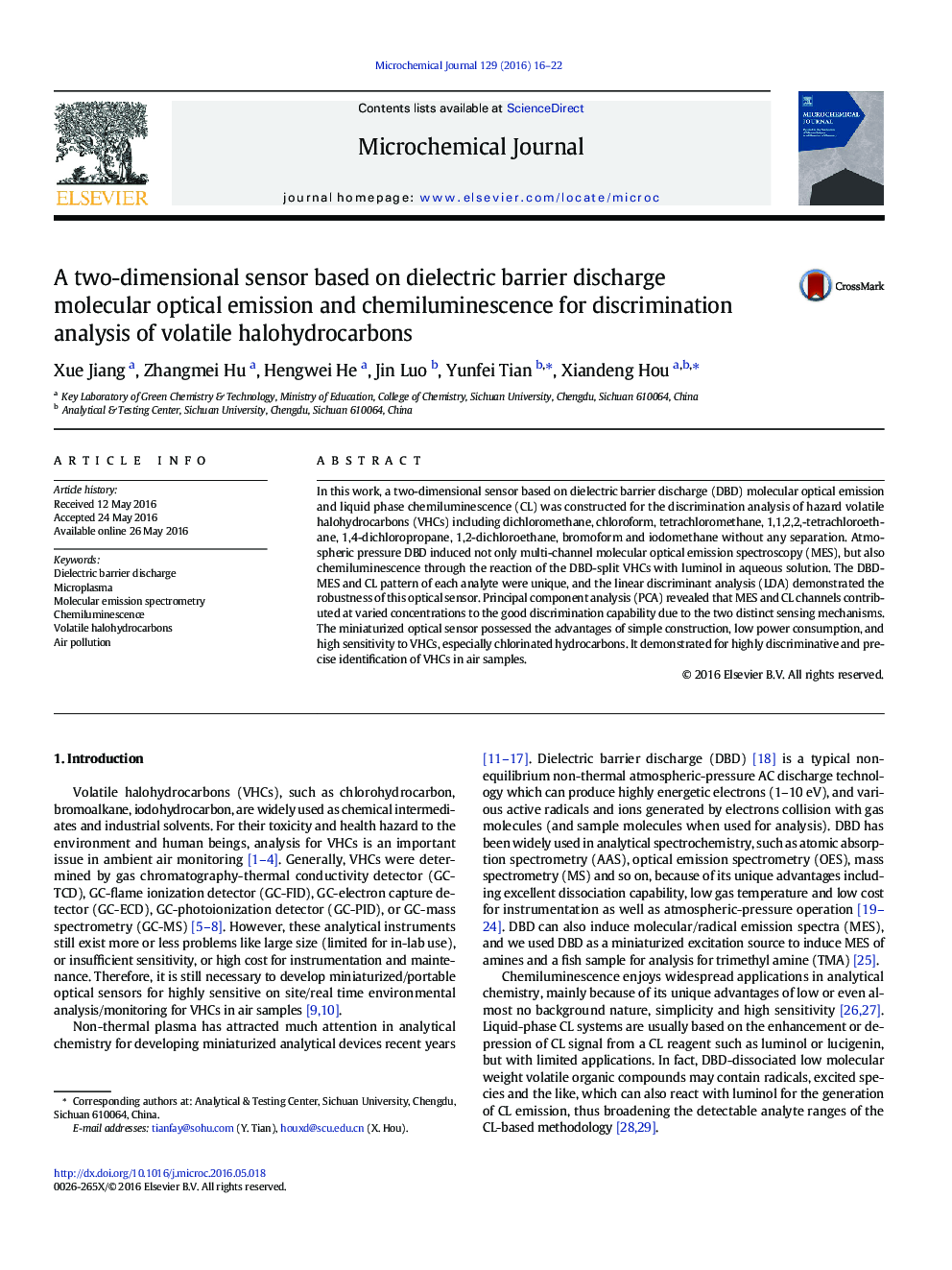| Article ID | Journal | Published Year | Pages | File Type |
|---|---|---|---|---|
| 1227583 | Microchemical Journal | 2016 | 7 Pages |
•A two-dimensional sensor using DBD multi-channel OES and CL.•Improved sensitivity and linear dynamic ranges.•Discrimination and identification of eight hazard volatile halohydrocarbons.•Simple construction, compact instrumentation, low power consumption.
In this work, a two-dimensional sensor based on dielectric barrier discharge (DBD) molecular optical emission and liquid phase chemiluminescence (CL) was constructed for the discrimination analysis of hazard volatile halohydrocarbons (VHCs) including dichloromethane, chloroform, tetrachloromethane, 1,1,2,2,-tetrachloroethane, 1,4-dichloropropane, 1,2-dichloroethane, bromoform and iodomethane without any separation. Atmospheric pressure DBD induced not only multi-channel molecular optical emission spectroscopy (MES), but also chemiluminescence through the reaction of the DBD-split VHCs with luminol in aqueous solution. The DBD-MES and CL pattern of each analyte were unique, and the linear discriminant analysis (LDA) demonstrated the robustness of this optical sensor. Principal component analysis (PCA) revealed that MES and CL channels contributed at varied concentrations to the good discrimination capability due to the two distinct sensing mechanisms. The miniaturized optical sensor possessed the advantages of simple construction, low power consumption, and high sensitivity to VHCs, especially chlorinated hydrocarbons. It demonstrated for highly discriminative and precise identification of VHCs in air samples.
